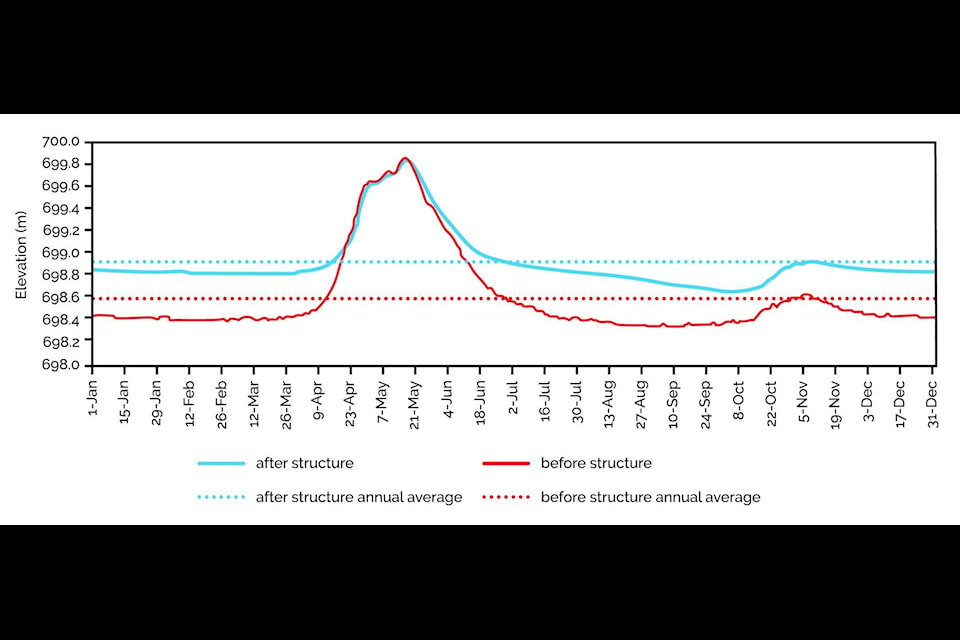A weir is being suggested on the Endako river by the Upper Fraser Fisheries Conservation Alliance (UFFCA), an Indigenous fisheries organization. The organization is now seeking support from the Regional District of Bulkley Nechako, the Village of Burns Lake and the public.
“The idea of a weir on the Endako river goes back to the 1990’s when Dennis Ableson, a fish biologist working in the area, began studying the sub-population of Chinook that spawn where Shovel Creek meets the Endako. His findings, along with data from the UFFCA’s own research, have shown a serious decline in these Chinook,” said Lisa Krebs, a UFFCA representative for the weir.
The idea was revised in 2016, but was shelved due to engineering design issues. In January 2021, UFFCA received COVID Stimulus Funding and in mid-April new engineering was completed for a passive weir that will have minimal impact on the lake while stabilizing the Endako’s flow. The intent of this passive weir is to slow the release of water from Burns Lake and Decker Lake during the summer resulting in increased flows in the Endako River
The intent of this passive weir is to slow the release of water from Burns Lake and Decker Lake during the summer resulting in increased flows in the Endako River in the fall when Chinook salmon and Kokanee are spawning in the river.
The weir has however raised questions about how it will impact the residents along Burns Lake and Decker Lake and what it will do to the water levels, especially when it comes to flooding.
Both the regional district as well as the village expressed that while they supported and understood the need for restoring the Chinook population, they had reservations. They are now encouraging the UFFCA and the Province to carefully evaluate the potential flooding and bank erosion impacts associated with higher water levels in Burns Lake and Decker Lake, and to consider the public input received.
The organization will be holding four public engagement sessions. The public engagement will be held on June 2, 3, 9, and 10. People can fill out a survey and sign up to participate in the webinars at www.upperfraser.ca/endako-weir.html
“Next steps include engaging with First Nations and members of the public in the region, and delivering the results of these meetings to the Province to complete the permitting process. If the project achieves a permit, construction will be very quick since the weir has to be constructed before salmon enter the Endako river,” said Krebs.
The UFFCA, which promotes conservation, protection and the sustainable harvest of fish populations, as well as the health of the ecosystems upon which they depend has 28 member First Nations and two Tribal Councils.
“The Endako Weir is an example of an environmental restoration project focused on climate change adaptation and resiliency. Climate change, as well as reduced forest cover, has led to seasonal reductions in water levels and an increase in water temperature in many streams and rivers in BC. This makes for challenging conditions for migrating salmon, and poor conditions for eggs that are incubating in these waterways,” said Krebs.
According to Krebbs, if all goes as planned, the weir should be in place by the end of July.
“If there are any delays, we will have to get DFO approval and wait until after the salmon run (likely late fall) to construct the weir,” she added.
Priyanka Ketkar
Multimedia journalist
@PriyankaKetkar
priyanka.ketkar@ldnews.net
Like us on Facebook and follows us on Twitter.
